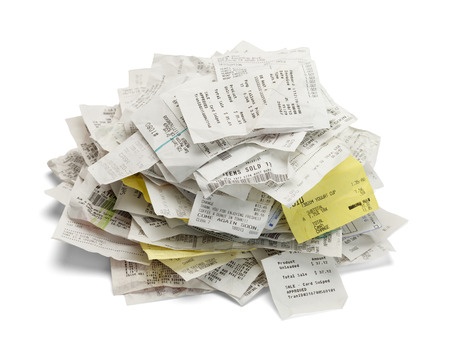With many of us living in smaller spaces and looking to cut down the amount of paper we have to store, an increasing number of people are asking if they can keep digital copies of their receipts – and how much or how little they have to hold onto for CRA compliance.
The good news is that you can absolutely go paperless, but there are pitfalls when you go digital: you still have to hold on to your records for seven years and you have to make sure it’s accessible, whether you’re using an app or accounting software. Below you’ll find information on how to go digital and the rules you need to know if worse comes to worst and you’re audited by the Canada Revenue Agency.
Make sure you have access to seven years worth of receipts
Big surprise – we find that there are people who don’t do a great job of keeping their records, but here’s what you need to know.
The CRA says you can keep digital copies of your receipts, but remember that it’s up to you to keep the records for seven years.
Snapping a photo with your phone is perfectly legal but you have to make sure those photos are backed up. What happens if your phone gets dropped into a pool? (Or more realistically, a toilet).
Don’t depend on the utility companies or your cellphone provider to keep for seven years worth of bills handy. Many people think they can get their bills online, but it’s not uncommon to be able to access only two years worth.
Many companies let you easily download a PDF copy of your bill. Do this each month (or each year) and you don’t have to worry about it.
Make sure that you can access everything you need
So you’ve digitized seven years worth of receipts. That’s great – but you have to have a system that makes everything accessible if you’re audited (or even if you need to find something!) It’s not fun trying to find one photo out of thousands.
When you’re doing a backup, you’ll have to find a storage solution where the records are still going to be available five years from now. An app on your phone may not be an app you’re using in the future.
You may be better off using a service provider where the company is not in the business of doing anything other than records retention. We use Amazon cloud storage (you’re welcome, Jeff Bezos!) because if we lose our data, we have no company!
Make sure that your records are as detailed as they need to be
The CRA says that a credit card statement won’t cut it – you may claim that a $40 Esso charge was for gas, but they don’t trust that you didn’t buy $40 worth of snacks. You need the original receipt. This isn’t meant to be adversarial – you’ve taken a position that it’s a legitimate business expense and it’s up to you to prove it’s correct.
Services
If you’re looking for a reliable service that keeps digital records, one that we’ve seen is called Hubdoc. It integrates into Quickbooks Online and the scanning software is intelligent. Not only can you snap a pic of a receipt, you can train the software to recognize the date, amount and category. Let’s say you have regular client meetings at Starbucks – you can tell the system that every time you scan a receipt from Starbucks, it should go into Quickbooks under Meals.
The bottom line is that digital records are compliant with CRA regulations, but ensure that you have everything you need in a secure spot and that it’s easily accessible.

